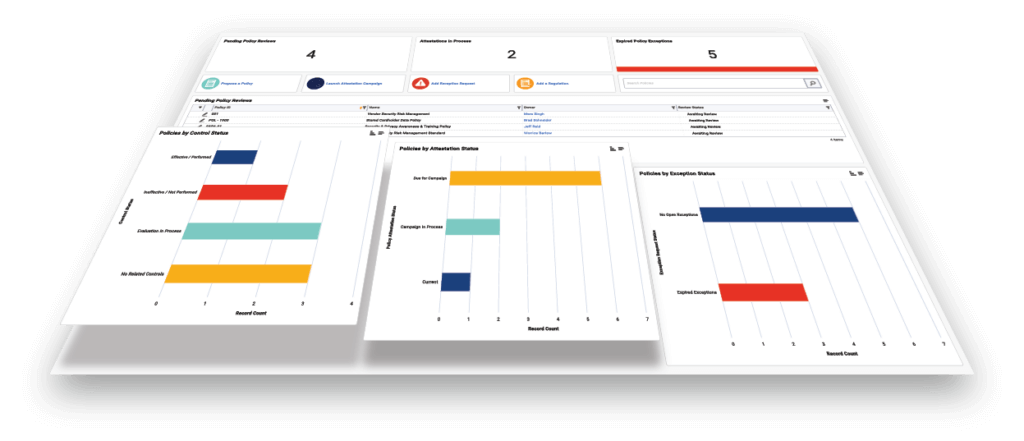Benefits of Risk Management Software and How to Choose the Right Product for Your Organization

Risk management software is a tool that helps organizations identify, assess, and mitigate potential risks that may affect their operations, reputation, or profitability. The software can also help monitor and report on risk performance, compliance, and governance. Here is an overview about the advantages associated with risk management software and how to choose the best product for your organization.
Benefits of Risk Management Software
Why is risk management software important for business? Here are some of the benefits that risk management software can offer.
Risk Reduction
Risk management software can help organizations reduce the likelihood and impact of negative events, such as cyberattacks, data breaches, fraud, lawsuits, natural disasters, and regulatory fines.
By using risk management software, organizations can proactively identify and prioritize risks, implement effective controls and mitigation strategies, and respond quickly and effectively to incidents. For example, an organization can detect and prevent phishing attacks with risk management software, avoiding the risk of sensitive data and customer information being compromised.
Decision-making Improvement
Risk management software can help organizations improve their decision-making and strategic planning, as they gain a comprehensive and accurate view of their risk profile, as well as the potential opportunities and threats that may arise from their internal and external environment.
This can help organizations align their objectives, resources, and actions with their risk appetite and tolerance, and optimize their performance and outcomes. For instance, with the software tool, an organization can evaluate and compare different scenarios and options for launching a new product or service in a competitive market.
Reputation Enhancement
Risk management software is also beneficial from a reputational perspective, as organizations are able to demonstrate their commitment to risk management best practices, standards, and regulations, therefore enhancing their reputation and improving stakeholder trust. Overall, this helps organizations build a positive image among customers, partners, suppliers, investors, regulators, and the general public.
It can also help organizations avoid reputational damage and loss of trust that may result from risk failures or scandals. For example, the software can help a business monitor and report on its compliance with environmental, social, and governance (ESG) criteria that may affect its sustainability and social responsibility.
Time and Money Savings
By using risk management software, organizations can automate and streamline their risk management processes, such as risk identification, assessment, mitigation, monitoring, and reporting, helping to reduce the cost and complexity of risk management activities and the human errors and biases that may affect them.
It can also help organizations increase their efficiency and productivity, as well as their return on investment through automation. For example, the risk assessment process becomes much smoother with risk management software due to the predefined templates, criteria, and scores generated in the tool.
How to Choose the Right Risk Management Software
So, you’ve learned about the benefits of risk management software, but how do you choose the best one for your business? Here are some factors that you should consider.
The Size and Nature of Your Organization
Different types of organizations may face different types of risks and have different risk management needs and goals. You should choose a risk management software that suits the size and nature of your business and the industry and market in which you operate.
The Features and Functionality of the Software
You should choose a risk management software product that offers the features and functionality that you need for your risk management activities.
For example, you may want software that supports different types of risks (such as operational, financial, strategic, or reputational), different types of analysis (such as qualitative or quantitative), different types of controls (such as preventive or corrective), or different types of reports (such as dashboards or charts).
The Ease of Use and Integration of the Software
You should choose a risk management software that is easy to use and integrates with your existing systems and processes. You should also consider the user interface, the learning curve, the technical support, and the security of the software.
Risk management software is a valuable tool that can help organizations manage their risks effectively and efficiently. To learn more about the advantages it can offer your business, reach out to us at hello@onspring.com to request a demo of our risk management solution. We look forward to helping you achieve your corporate goals.
Actionable insights we think you’ll like
Risk Control Matrix (RCM): Quick Guide to Building Business Resilience
A risk control matrix helps businesses identify, evaluate, and prioritize risks. Learn how this tool aids in resilience and continuity.
6 Benefits of Using Vendor Risk Assessment Software
From minimizing disruptions to empowering teams with actionable insights, learn how tools like Onspring and Black Kite enhance efficiency and security.
3 Powerful GRC Automation Examples to Streamline Your Processes
These GRC automation examples illustrate the tangible benefits of moving away from manual processes: greater visibility, consistency and adaptability.







